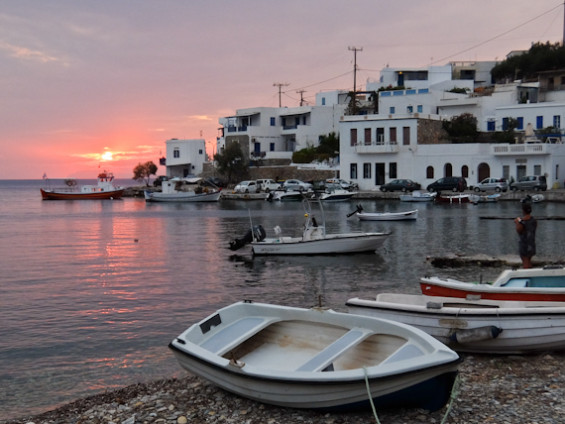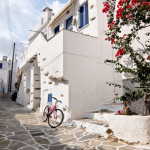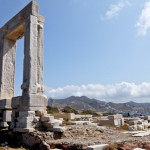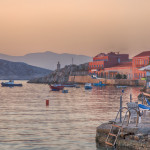In his third Greek Island report, Rupert Parker walks the length and breadth of Amorgos, one of the most unspoilt of the Cyclades.
It was the 1988 movie “Le Grand Bleu” which put Amorgos on it the map and, as I dock at the tiny port of Katapola, the only other tourists are speaking French. The harbour has a cluster of simple restaurants and tiny guesthouses, reminding me of how life in the Greek islands used to be. It’s situated on an attractive horseshoe bay, really a collection of three separate villages – Katapola proper on the south side, Xylokeratidhi on the north shore, and Rahidhi in the middle.
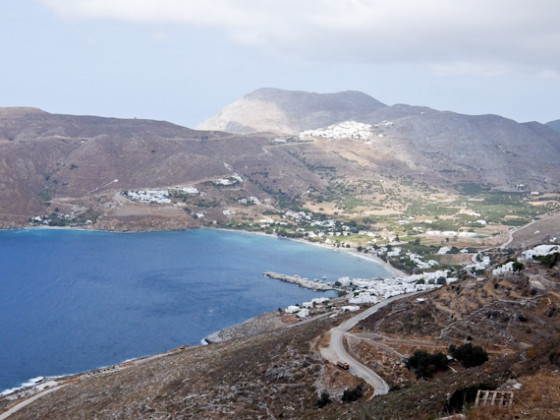
Behind, the mountains rise up into one long ridge reaching 800m at its highest point and they’re covered in a network of well-signed trails. The landscape is the star here, rather than the beaches, and the best way of discovering the delights of the island is on foot. That way you can truly appreciate the magnificent setting of the archaeological remains.
I take bus upwards to the centre of the island. Surrounded by rocky hills topped with decapitated windmills, Chora, the island’s capital was built as protection against pirate attack. The ruined 13th century Kastro perches precariously on an upright volcanic plug, wrapped with a chapel or two. It’s surrounded by low white houses, linked by a labyrinth of narrow lanes, sprouting purple bougainvillaea.
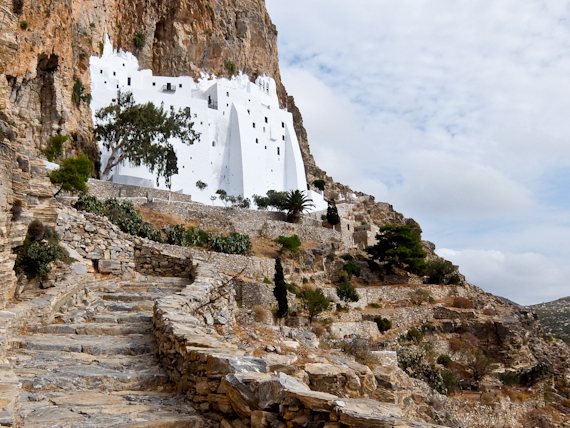
From here a path leads downwards towards the sea and I then start to climb 350 steps to the 11th century Moni Hozoviotissis monastery. The dazzling white sheer structure is embedded into the cliff face and eight floors, connected by narrow stone staircases, are carved into the rock. Only a couple of monks occupy the fifty rooms now but they still offer traditional hospitality. Every guest is treated to a sugary lump of loukoúmi, a warming shot of raki, with honey and spices, and a cool glass of water.
Suitably fortified, I follow a well-signed trail northeast along the high spine of the island. This is a barren treeless landscape but in the distance, I can make out tiny white villages. I soon drop down to Aegiali, Amorgos’ second port, even sleepier than Katapola. Resisting the temptation to rest on the town’s sweep of sand, I take a circular trail upwards through the lovely villages of Langada and Tholaria. After another three hours, I’m back at the shore and celebrate with a quick swim.
The next day I set out in the opposite direction, heading south-west, and climb out of Katapola on a steep road to reach the ancient city of Minoa in about 40 minutes. Like most things on the island, it’s very low key, with no information on display, but the setting is spectacular. I see fragments of wall, the foundations of an Apollo temple, and trays upon trays of unsorted pottery shards.
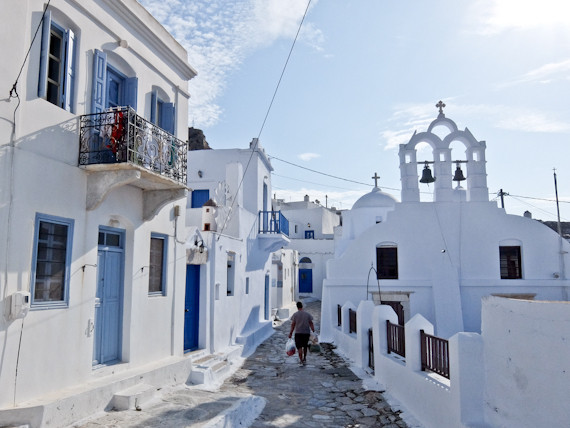
The track follows the coastline south-west, descending almost to sea level before climbing up through abandoned terraces to reach the site of Ancient Arkesini. It’s in a commanding situation, perched precariously on the clifftops, surrounded by water on three sides. It dates from the 9th century BC but was later abandoned because of pirate raids.
A short distance inland is the Tower of Agia Triada, built in the 4th century BC to give citizens safe haven. It’s one of the largest and best-preserved towers of the Cyclades, quite spectacular in size. This rectangular fortress, built of local limestone, is a characteristic example of Hellenistic architecture and stands out in the landscape.
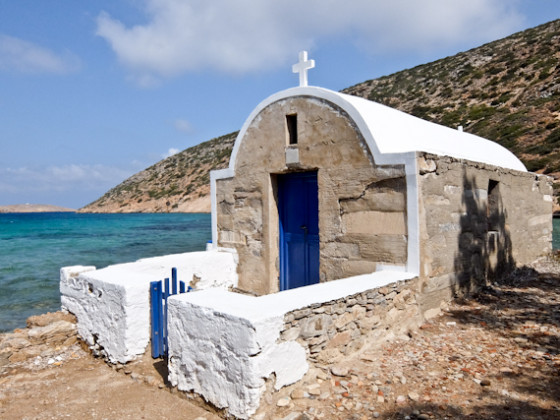
Unlike the north of the island, the south is far more fertile with abundant olive trees, and I descend steeply to a narrow bay. The beach is deserted, overlooked by an old chapel, and the sea beckons. After a final dip, I make my way back inland to Kolofana and tuck into wonderful local specialities at Apanemo restaurant. Most of the ingredients are organic, grown in the gardens nearby, and the star dish is mother’s slow-cooked goat – definitely free range.
Why not read Rupert’s other Greek island reports: Naxos and Paros
Tell Me More About Amorgos
Wizzair has cheap flights from London Luton to Athens.
Thameslink is the quickest way to Luton from central London.
Most ferries from Piraeus go via Naxos. There are also direct links with Mykonos and Santorini. With careful planning you can explore on foot and use the limited bus service.
Diasino Studios, just behind the port in Katapola, makes a comfortable base with a sea view.
Mouragio Taverna serves up excellent seafood right on the harbour.
Experience Amorgos has information about the island.
Visit Greece has information about the country.
On Foot Holidays offer 7 days walking in Naxos and Amorgos from £645.

